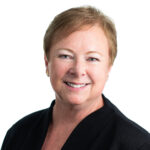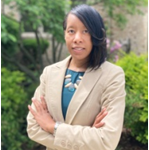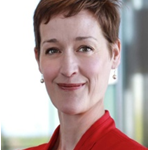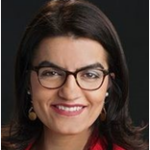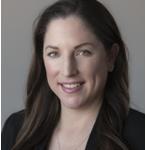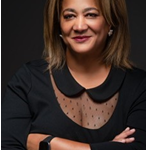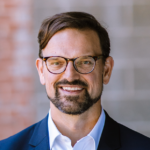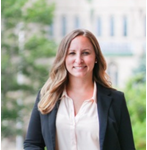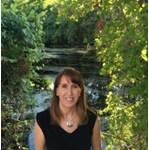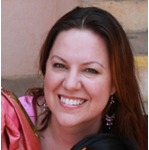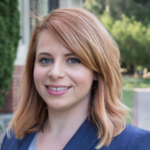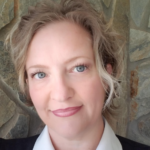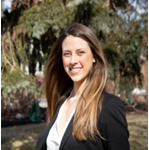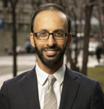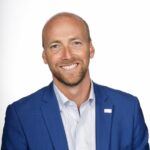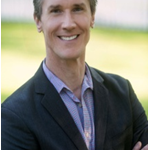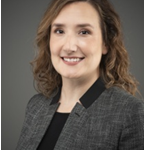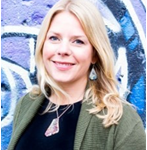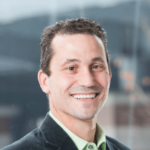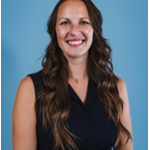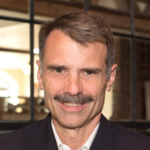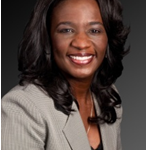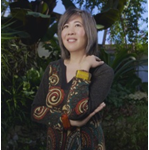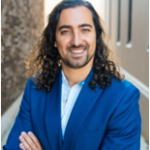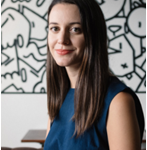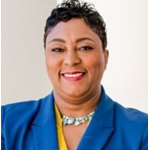EcoWorks: Addressing Climate Change by Enabling Sustainable Communities

EcoWorks is a nonprofit that works at the intersection of community development and sustainability. Based in Detroit, EcoWorks serves residents, households, community organizations, businesses, and municipalities, working to create just, equitable, and inclusive solutions to climate change. SBN Detroit spoke with Briana DuBose, EcoWorks executive director, to find out more. Q: Tell us about EcoWorks A: EcoWorks is a Detroit-based nonprofit that addresses climate change by enabling Michigan communities to be more environmentally and economically sustainable. We provide transformative climate and sustainable solutions for communities that are underserved and often unseen and unheard. We do this through community development, green consulting, home energy assistance, climate advocacy, education, and workforce development. Our Eco-D program is an equitable approach to securing affordable, healthy resilient homes and neighborhoods. We design and advocate solutions that promote utility affordability, housing security, climate resilience, and resident-led neighborhood development. We also work to engage community members to be part of learning about sustainability and provide direct service programs, upgrades and repairs, and more for underserved communities. Currently, we are working with four areas in Detroit – Hope Village, Southwest, Berg-Lahser, and Yorkshire Village to build out EcoDistricts. We offer comprehensive resources to help these areas transition to decarbonization and electrification. The program also provides residents and community organizations with resources to achieve healthy, affordable, resilient, and energy-secure homes and neighborhoods. Q: How do you work with Detroit neighborhoods and communities specifically? A: We look at ways to ensure the health and safety of all households. We focus on disadvantaged communities working with people who are vulnerable to the impacts of climate change – for example air quality. We partner with coalitions to improve policy and design innovative financial models for healthy, green, housing and neighborhoods. An example of this is River Rouge, which is surrounded by multiple plants and therefore has poor air quality. We go in and have workshops to discuss sustainability and energy-saving measures in their area. People are often surprised that asthma can be caused by poor air quality. We will go in and perform needs assessments on homes and work toward proper sealing and weather stripping and filters so the residents can have clean air in their homes. We also work with the communities in a bigger way to do things like build rain gardens, create green spaces, and more toward the things the specific areas need. Q: How does the Strategic Community Initiatives Program work? A: We develop custom-fit climate and energy solutions for municipalities, school districts, health systems, small businesses, and nonprofits. SCI has secured over $5 million in clean energy investments and over $30 million in lifetime savings for over thirty Michigan municipalities. EcoWorks serves as the lead technical provider as part of the Sacred Spaces Clean Energy Grants, eliminating disproportionate energy burdens for low-income congregations, inclusive of Black, Indigenous, and People of Color (BIPOC) communities statewide. Eleven houses of worship in low-income Michigan neighborhoods from Detroit to the Upper Peninsula will become more energy efficient with support from this $1.24 million grant of federal funds through the Michigan Department of Environment, Great Lakes, and Energy (EGLE) to make improvements that reduce their consumption of fossil fuels for electricity, heating, and cooling. From this, we expect the congregations to achieve a 15% energy savings that will go back into the communities. Q: How can a business in Southeast Michigan take advantage of EcoWorks? A: We bring a unique blend of people and change-management skills coupled with technical assessment and project management capabilities to businesses. Contact us and we’ll set up a meeting to talk. We can develop and manage holistic energy and climate action plans collaboratively for organizations. Q: How do you think EcoWorks impacts Southeast Michigan businesses? A: EcoWorks can help organizations stay nimble and resilient as energy costs and climate impacts rise. We can develop energy plans and implement energy projects by engaging people and bringing them together. We are often conveners. We are on the front line in communities, and we go into businesses to discuss how they may be contributing to the environment and sustainability in their communities. Often, businesses don’t know where to begin or may think sustainability initiatives are going to be expensive. We help educate them and show the ROI. Most businesses want to leave a better footprint on their community; they just need the resources to do so. Q: What are the biggest opportunities EcoWorks represents for Detroit? A: While our roots are firmly planted in energy conservation, we have grown to emphasize all aspects of sustainable development as it relates to building affordable, energy-efficient residential housing and commercial buildings. We are committed to promoting environmental equity and we take pride in helping communities get there. Be sure to subscribe to our newsletter for regular updates on sustainable business practices in and around Detroit.
Daimler Truck’s Detroit Manufacturing Plant – From Diesel to EVs
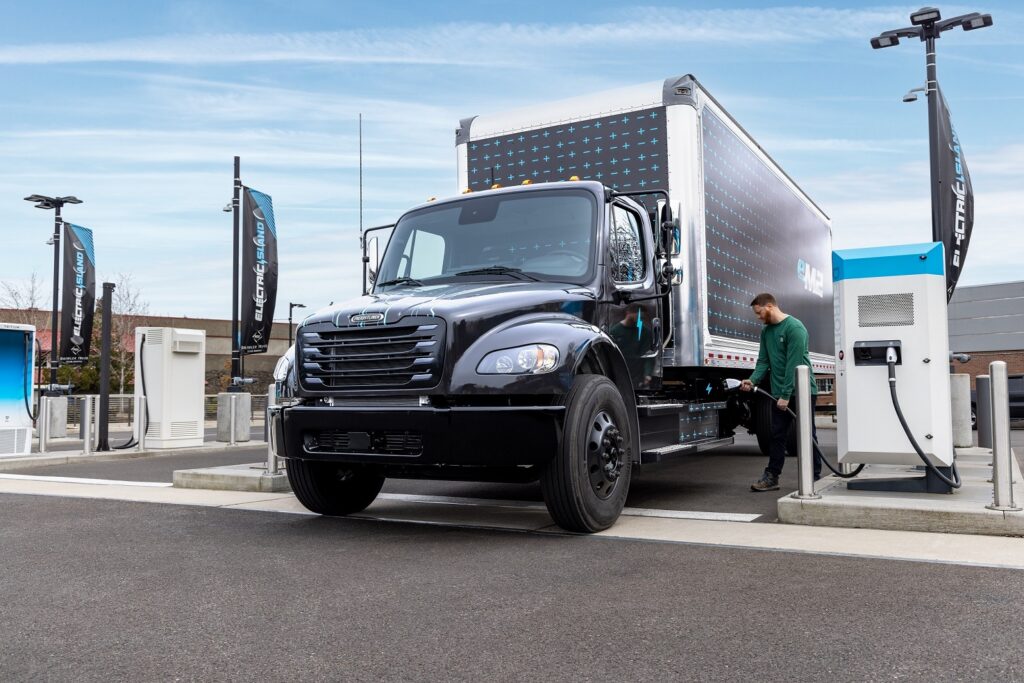
Daimler Truck’s Detroit® Manufacturing Plant produces 400 engines, 250 transmissions, and 1,300 axles daily. The 85-year-old factory is known for making diesel engines but is now working to be a leader in the transition to sustainable transportation. SBN Detroit interviewed Apoorva Mathur, remanufacturing – “reman” – electric product strategy analyst for Daimler Truck North America about the remanufacturing, reuse, and recycling side of the business. Q: How do you approach electrification? A: Our goal is to provide the ePowertrain solution that leads the transition to sustainable transportation. Everything we do pushes toward promoting sustainable transportation. Q: In your role, you focus on the sustainability of Battery Electric Vehicle (BEV) Powertrain components through remanufacturing, reuse, and recycling. How does this work? A: Clearly, part of leading the transition to sustainable transportation is providing an option that has zero emissions, but from an aftermarket perspective, it’s important to be conscious about what we do with components once they come out of the truck. We work to reuse as many components as possible through the remanufacturing process so that we are recycling what we already have. A battery has a lifecycle that extends way beyond what is usable in a vehicle, so to use that battery responsibly it has to have secondary applications. Many times, batteries that come out of a vehicle are used for peak shaving. Peak shaving is utilizing a battery storage system during peak energy usage hours to offset the amount of energy being pulled from the main grid. This reduces the load on the grid. Used batteries can also be used in a microgrid solution whereby some kind of solar or wind-powered system is connected to a battery storage system and energy from solar is used to power the batteries. This is a self-contained situation that does not rely on the grid system at all. Companies can also build used batteries into chargers to provide backup power. So, there are different ways batteries and components can be remanufactured and reused. The recycling component is pretty straightforward. We have a recycling program and a company that disposes of batteries and materials responsibly and also recycles material back into the supply chain. Q: In your role, you also support special projects that advance battery electric vehicle (BEV) adoption, such as creating a charging hub at your Redford location. Can you tell us more about that? A: Yes. The state of Michigan secured $13 million in funding in partnership with Daimler Truck North America and DTE Energy to develop the mobility charging hub earlier this year. We will build a multimodal charging hub there, helping companies to transition their fleets. The charging hub will support heavy trucks and also passenger vehicles and more with the intent to help the entire community transition to EVs. Q: What is driving your change to electrification? A: The largest driver is a combination of emissions standards becoming stricter and also a greater focus on sustainability as a whole on the global stage. Daimler Truck is committed to the Paris Agreement globally, and we are doing our part to provide our customers with zero-emission options. Daimler Truck as a whole is looking for what best suits our customers’ needs, and we are electrifying products across the board and will continue to go down that path. We are also looking at other options such as hydrogen. We need to explore everything to ensure we are giving the best options to our customers. Q: What drives your passion for what you do? A: This is so new for all of us. I’m constantly learning. We are faced with something new every day when comes to requirements from a regulatory perspective and we are constantly getting customer feedback. It’s unchartered territory for all of us and we are all taking this learning journey together in this industry. That’s fun for me. It’s not the business as usual that Detroit Diesel has been doing for 85 years. It’s new and different and exciting. Q: What are the biggest challenges? A: Again, it’s unscripted. It involves so much effort as an industry to make this switch. We can build the product, but we also need the infrastructure. There are gas stations on every corner but supporting EVs is brand new. Also, we need support from utilities. Grid support requires more resiliency as we switch, and there is a lot of work to be done here. When we say we are transforming the transportation industry we mean it. We are taking every component and turning it into something different and it requires so much from everyone. Q: What are the opportunities? A: We’ve seen a whole new level of energy and innovation coming from all sides. New suppliers and players coming into the space every day. It’s exciting to see these companies coming into the industry to push and innovate. On the infrastructure side, it’s the same. New data companies are looking at how to use power in areas to help the grid. There are new charging management systems, new charging suppliers, etc. It’s given the industry a chance to innovate and go outside the norm of what we provide. Q: How do you think the work you are doing impacts Southeast Michigan in terms of innovation? A: Detroit is the place to be when it comes to sustainable transportation. And Detroit is the hub for all things mobility. The Battery Show North America is in Detroit each year, and there is so much knowledge at that show. It’s all being done here. Detroit is the center of competency. It’s a great place to learn and innovate and partner and work within. Q: What does the future look like? A: We will see change on the roads around us. Electric cars are growing in production and adoption in this area. We will see different types of technology being used for different applications as we learn what’s effective. We will see a mixed mobility strategy across the board and that’s exciting. I also
Wayne State University Moves Ahead As a United Nations Regional Center of Expertise
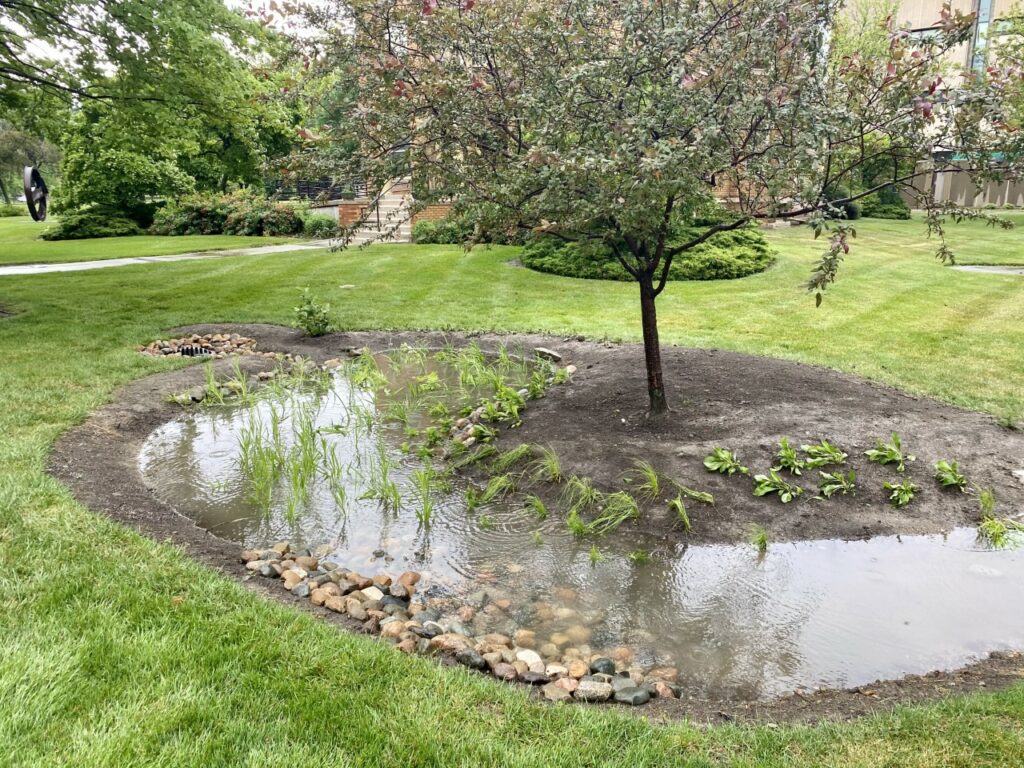
In April 2022, Wayne State University and the University of Windsor were designated as the United Nations Regional Centre of Expertise (RCE) on Education for Sustainable Development in the Detroit-Windsor region. RCEs are networks of educational institutions, communities, governments, businesses, and other organizations that work together to advance and implement sustainability education within a region. SBN Detroit talked with Donna Kashian, Wayne State University professor and director of Environmental Sciences, who is leading the efforts at the university. Q: Tell us about regional centers of expertise. A: The RCE is a global program. Our designation is somewhat unique in that we are binational. In our case, the US and Canada focus on the shared legacy of the region. The waterway is deeply linked to industry and economics in our area, and the two nations face similar challenges. We’ll work toward enhancing the economy to meet the sustainable era. This involves a large set of goals with a foundation in education. Part of our work is to bring together community partners and address activities related to sustainable development challenges. So, we are connecting entities such as the Windsor-Detroit Bridge Authority, key individuals within schools and universities, the government, municipalities, and nonprofits to work on collaborative projects toward our goals. Ultimately, we will utilize these partnerships and networks to support research, training, and participation to move sustainable education forward. Q: How is this set up? A: Wayne State University has been very supportive of this effort and has contributed several resources, including support for two graduate students who will serve as sustainability ambassadors to help move things forward. Through the UN RCE, we are in the process of forming a sustainability council. We are appointing an individual from every unit within the university to report back to this council. Additionally, we will also have an external advisory board to help identify sustainability challenges in the Southeast Michigan region and the Essex region. The fellows will start tackling research and projects that are identified. Q: I understand that the goal of the UN RCE is to identify actions that address climate change, economic and health disparities, and social inequity to create a more sustainable future. How will you approach this? A: This is incredibly broad-sweeping and each university will tackle projects differently. WSU just launched a new five-year sustainability plan, and environmental justice and social inequity are addressed throughout. Many universities don’t include these front and center in their plans, so in this way, I think we can work as an example to advance university sustainability planning as a whole. Regarding climate change, we recently submitted a $3 million project to tackle climate resilience and flooding – that involves infrastructure and design – in addition to many projects in the community and education around that, which include talking to local middle and high school children. Two of my students and I have an upcoming visit to 6th-grade classes to educate young people on climate change. So our work involves projects, traditional research plus community education. Q: What are the benefits to students? A: Approximately six years ago WSU applied for and received a training grant in urban sustainability which initiated our T-Rust (Transformative Research Urban Sustainability Training) program. This program is wrapping up and has transitioned into the UN RCE. This program supported 33 graduate students and, to date, ten have graduated with seven master’s degrees and three doctorate degrees. Two of these students have been chosen to work on research and science policy on Capitol Hill. We are training future leaders, and they are walking into really great positions. The UN RCE designation will help us step into undergraduate opportunities as well, so we can reach more students and start training at an earlier stage. When the students hear the United Nations designation their ears perk up and are anxious to get involved. Watching the grad students go on to succeed and being able to extend more opportunities to undergrads is huge. Q: How will this work potentially impact Southeast Michigan businesses? A: This is one of our big agenda items. Typically, the environmental side of the university, where most of my connections are, has not been as connected as it could be to the business side. We’ve been working in silos. So we are working to form partnerships and do a better job at this. Q: What other things are you involved in around sustainability? A: I serve as a US representative for the International Joint Commission’s science advisory board, and next year will serve as president of the International Association of Great Lakes Research (IAGLR). I also am on the Conservation and Environmental Issues Committee – Society of Fresh Water Science, and the Inclusion, Diversity, Equity, and Accessibility+ Committee (IDEA+) committee for IAGLR. Q: How do these things help drive and shape your work overall? A: I think it all ties together. People say I’ve taken so much on, but it’s all interconnected and I think it’s about centralizing the work, not creating more. It’s all focused on the health of the Great Lakes and environmental justice. I hope to use and bring my shared resources to the UN RCE. Q: Where does your passion come from? A: Growing up, I lived in a Portuguese community in Massachusetts that has a long history of pollution from the textile industry. My family has an extraordinarily high cancer rate. I’ve always loved being outside, and I’ve always been passionate about improving health. I think my drive started there. And then five years ago, I was diagnosed with cancer myself. That has pushed me. The drive was there, but I now have an even stronger desire to push forward. Q: What is the end game? A: To live in a society that is just from a sustainable perspective, and to live within a healthy climate and environment. We clearly cannot accomplish this through the UN RCE alone, but we can move the dial. Training our youth to continue the quest and vote
Bosch and Sustainability in Detroit
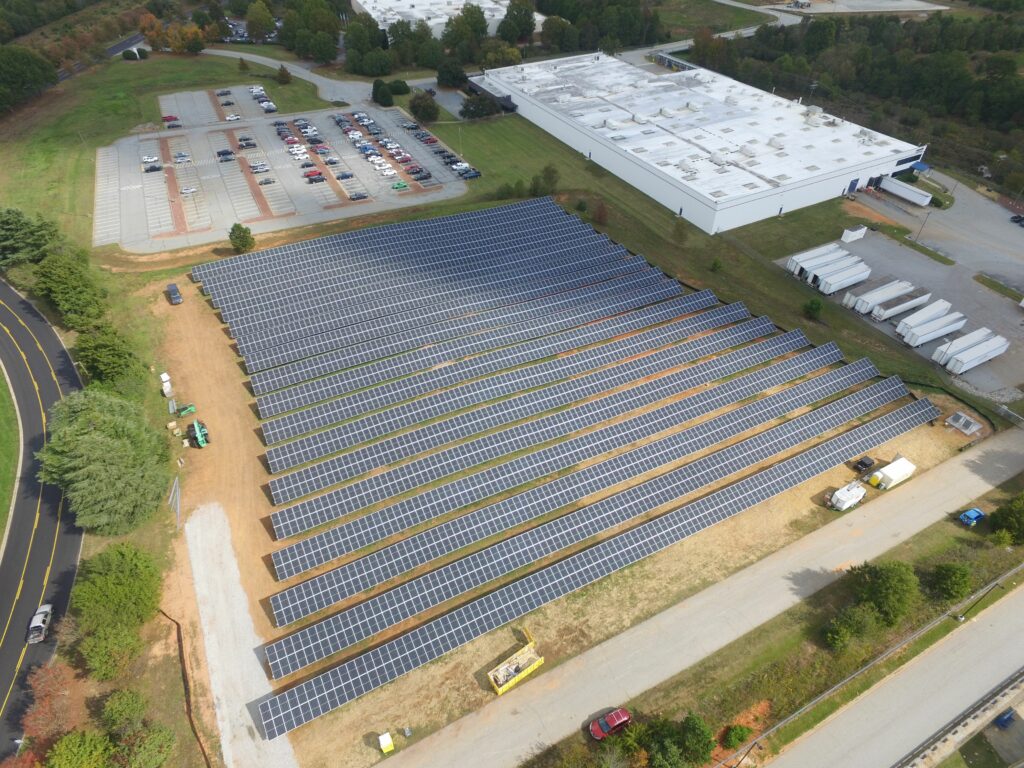
Bosch is a Germany-based global supplier of technology and services that employs 421,000 employees worldwide in over 60 companies. It has technical centers in Farmington Hills and Plymouth. We spoke to Tracy Rosol, carbon neutrality coordinator for the U.S. and Canada, about how the company approaches and manages sustainability. Q: How does Bosch approach carbon neutrality? A: In 2019, our leadership announced that Bosch would become 100% carbon neutral. We established committees in a multitude of countries and put key people in place to procure new green energy and carbon credits to offset emissions. We created a database where locations worldwide submit information like how much energy, water, and gas each is using. Q: What is your role in this? A: Germany is our hub and all initiatives roll out from there and cascade down. My main role at Bosch is operations support analyst – and I am also the carbon neutrality coordinator for the US and Canada. We have a carbon neutrality coordinator in every country. Q: What are your goals in this role? A: We had requirements to be 100% carbon neutral, and we reached that goal in 2020. It was not an option to fail. The entire company – over 400 locations worldwide – has reached this goal. Q: Tell us about some of the internal initiatives Bosch has implemented to protect the environment. A: Bosch works to invent things to make life better. We are working on different fuel systems, working on recycling programs, and composting programs. Within the facilities, there are many initiatives to ensure we are landfill-free. We work with local amenities for plastic pickup. Our cafeterias use compostable items and composting bins. What trash we do have is incinerated. We are working on technologies to reduce energy usage in our plants and also in homes. All of our lighting has now been changed to LED and we use motion detectors. We are working to install solar on sites. Bosch purchases carbon credits on behalf of all employee flights in an effort to offset flight emissions. It’s built into travel costs. This is all driven globally. Q: What is the sustainability approach when it comes to products? A: Let’s just use a pen as an example of a product. Bosch’s goal, as well as the OEM’s, is to make sure the entire process of developing this pen is sustainable. This involves what materials are being used, where the materials are procured from, what ink is being used, the packaging, the transport … all along the chain every piece needs to be sustainable. We are also pushing all other businesses we do business with to utilize sustainable practices. Q: What are the challenges? A: The biggest challenge is ensuring where our renewable energy credits come from and making sure all locations are being issued the credits for the recs. The challenge is tracking it. This involves handling a lot of data across all locations. Additionally, the market is challenged because so many companies are looking to procure renewable energy. This causes the price to fluctuate, and it’s a constantly changing market. We don’t want to over-purchase or under-purchase so it’s a challenge to manage this. Q: How are partners vetted when it comes to sustainability? A: We have a third-party vendor that is directly connected to the markets so they do this for us. We also have an external legal company. Bosch is not an expert in these areas and won’t pretend to be, so we go to the experts and use them to assist us in all of this. Q: What advice do you offer to businesses looking to contribute to sustainability overall? A: Begin with low-hanging fruit. Take a look at where you are wasting energy and start to make a change. Things like putting in motion detectors and switching to LED are good places to start. Reduce where you can. Utilize composting. Put recycling processes in place. From there, find a reputable company to walk you through it. Companies like Honda have partnered with Detroit Edison to put on webinars. Attend the webinars and begin to learn. Find ways to lean on experts and use their resources. Bosch did not do this overnight. We started in 2016 and worked at it over time. Be sure to subscribe to our newsletter for regular updates on sustainable business practices in and around Detroit.
Fishbeck: Working to Keep Natural Resources in Focus
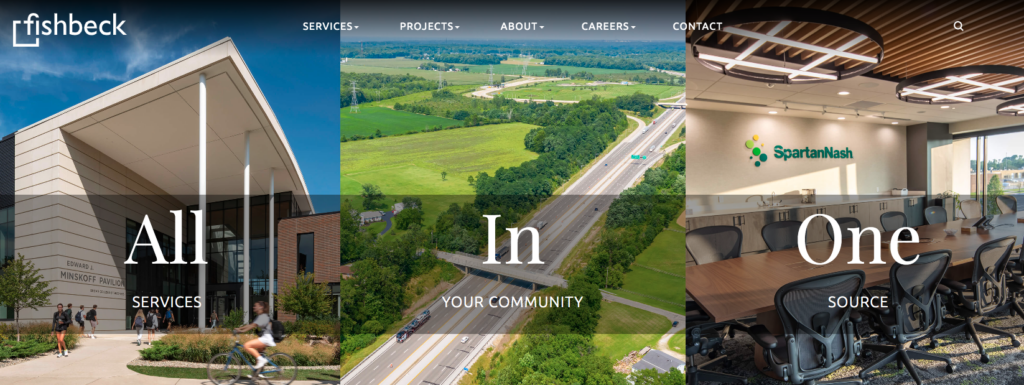
Fishbeck is a 67-year-old consulting firm focused on engineering, environmental sciences, architecture, and construction management with ten offices in Michigan, four in Ohio, and one in Indiana. We spoke to Senior Engineer Lillian Woolley about the company’s internal sustainability practices, as well as their clients. Q: What would you like us to know about Fishbeck? A: Our goal is to provide all-in-one solutions to clients and to do that, we have many technical professionals completing a wide variety of work. Our technical staff has worked on some great projects for clients to support client sustainability initiatives, and I think that many Fishbeck employees enjoy those types of projects the most. Our technical teams like the challenge of pulling off a project that is considered a “win-win,” and we often get the opportunity to do that. One of my favorite projects that we facilitated was the construction of a solar garden on a brownfield site in Cadillac, Michigan. Q: Has Fishbeck always had a focus on sustainability? A: Fishbeck started as a civil engineering firm that worked on water and wastewater treatment system projects more than 67 years ago. Over the years, different disciplines have been added, including environmental engineering, but there has always been a strong focus on helping preserve and enhance the natural resources around us. Fishbeck employees are active in several organizations like the 2030 Districts, U.S. Green Building Council, and more. Q: Do you have an internal sustainability team? A: We have a Sustainability Committee comprising representatives from most departments. Beyond the work we do for our clients, the Sustainability Committee considers firm-specific sustainability issues from an employee’s point of view, as well as from the point of view of the general public. The committee has recently released a survey inside the firm to gauge interest and benchmark sustainability efforts. Using that data, they will present a plan for becoming an even more sustainable organization. Your website says Fishbeck’s core purpose is to help people realize their visions while benefiting society. Can you tell us more about that? A: Most Fishbeck employees want to work on technically challenging projects that leave the world – or their client – in a better place after the project is finished. For example, Fishbeck is working with the Kent County Department of Public Works on its Kent County Sustainable Business Park. Kent County has an ambitious goal to “Reimagine Trash” and to divert 90% or more of its trash from the landfill before 2030. The new sustainable business park will include facilities to recycle solid waste. Our civil engineers designed the site work and utilities, while others designed the stormwater management system. Our environmental team is working on the wetlands permit and other environmental permits. Who wouldn’t love to work on a project so promising? Q: Fishbeck achieved a Wildlife Habitat Council (WHC) Conservation Certification for its office headquarters in Grand Rapids. Tell us about this. A: Fishbeck’s Grand Rapids Office is truly beautiful and includes more than 6 acres of wetlands. There is a large pond and, depending on the time of year, you can see all kinds of birds and other wildlife! To become certified and to document our commitment to being good environmental stewards, Fishbeck ecological professionals surveyed the site, outlined a baseline inventory, and then implemented a plan to enhance the habitat. We recently had a Girl Scout troop come to our office to make bat houses, which we will install at the site. Q: What are examples of your internal sustainability initiatives and goals? A: Not only do our architects work with clients on LEED certification, but the Grand Rapids office buildings and landscape management are certified by the Leadership in Energy and Environmental Design (LEED) rating system. As part of its LEED certification, Fishbeck implements best management practices to benefit adjacent ecosystems. Our Facilities Department unveiled a new recycling program earlier this year, including a compost program. They are also reviewing the downstream impact of our programs and processes. The company has a hybrid work policy so employees can work from home. We are each given 8 hours of volunteer time to use during work hours during the year. Our 17 office buildings have smart systems that turn off lights and lower heat when employees are not in the office. Q: What are some examples of client work that involve sustainability in Southeast Michigan? A: Fishbeck has worked with clients in Southeast Michigan on stormwater management projects, others on boiler or HVAC systems to reduce energy consumption, as well as work on a potential recycling facility. A few years back, we were doing a lot of energy assessments, and we are excited to be doing projects now identified in those assessments. Q: How important is choosing partners and suppliers that also have a sustainability focus? A: Scope 3 greenhouse gas emissions can be much higher than Scope 1 and 2 emissions, so paying attention to partners and suppliers is important. I encourage my clients to have a good understanding of their carbon footprint to ensure that when making changes they are moving in the right direction. It is fairly easy to switch suppliers and double your footprint if you are not careful. Q: What are your biggest challenges when it comes to sustainability? A: Communications. In many cases, the most sustainable approach may be cost-effective, but it takes time and effort to make those projects happen. You need to be knowledgeable about available grants and rebates. You need to understand all options available, and you need to be able to communicate the benefits to all affected stakeholders. We make an effort to ensure we look at every option as well as advise our clients on making the best decision for the environment. Q: What are the biggest opportunities? A: The biggest opportunities are available in performing energy assessments and ensuring your facility is operating at its most efficient. This is because both utilities in Southeast Michigan offer rebates and similar programs allowing
Resiliency Hubs, Waging a War on Trash, and Increasing African American Home Ownership

In 2022, Monique Baker McCormick was re-elected for her third term as Wayne County Commissioner of District 6. She serves Redford Township and Northwest Detroit in the community where she grew up. SBN Detroit spoke to McCormick about the sustainability initiatives she’s been involved in and how they impact residents and businesses in her community. Q: How does sustainability integrate with your position and the work you do as a Wayne County Commissioner? A: I think elected officials must support our communities and in doing so we need to protect the environment and quality of life for today and for future generations. Q: You are involved in so many committees and initiatives, can you give a couple of examples of how sustainability comes into play? A: We recently received a $1.1 million grant to create Wayne County resiliency hubs to reduce our carbon footprint in Wayne County. When I became the chair of Health and Human Services, I became involved with the toxic waste coming from Ohio to Wayne County following a train derailment. This is an environmental issue, a human rights issue, and a civil rights issue, and impacts the quality of life for all of us. As a commissioner, I don’t dig into how cities manage their environmental programs, but I can help on a county level to get funds and to help with programming necessary for the communities. Within the Economic Development Committee, we do have more say in how the operation of sustainability of Wayne County unfolds and how the resiliency hubs work as well. Q: How does this work impact businesses in your district? A: I think the work we do to reduce our carbon footprint and improve the quality of life in Wayne County impacts all of our citizens and businesses and will only help them grow and flourish. I think it helps to drive new businesses to the county as well. Q: You created the Wayne County Commission Youth Council (WCCYC). What is the impetus behind this? A: I had a long journey to becoming a commissioner. I started as a young Democrat and worked for the Democratic party and began to see first-hand how our democracy works and also how it does not. I want the next generation of leaders to understand that if you don’t fight for something, have a voice, or don’t have a seat at the table then don’t expect that someone is going to fight for you. If you want to see change in your community change starts from the bottom up, and that means all of us getting involved in the process. The Wayne County Commission Youth Council helps young people understand this and empowers them to get involved in the process. The goal is to take youth from varied socioeconomic backgrounds and multicultural neighborhoods and help them become socially responsible community members. They pick their topics. We have worked on gun reform, mental health in schools, economic oppression, and more. They do voter registration and outreach, community service, and other issues. We travel to Lansing to meet legislators to make their voices heard regarding what they want to see change in Wayne County. Q: Do you think the youth that are involved now will have an impact on Southeast Michigan businesses as they join the workforce? A: One girl comes to mind – a tenth grader who was an introvert who did not want to speak in meetings at first. She didn’t know she had a voice. She evolved and eventually became the Youth Council President, speaking at all of the meetings and doing interviews, etc. Now she knows she can use her voice for change and for good. Another former member is now the president of his college council on campus. The program also has an internship component. One of our members worked for the mayor’s office in Northville. They go on to do the work that we start. Q: You have led efforts to mitigate foreclosures and increase African-American homeownership. How does this tie to sustainability regarding developing communities and the economy? A: The sustainability of Black and Brown communities starts with the American dream of home ownership. With home ownership you build equity. You buy a home and the value increases over time and once that increases you have this equity. But we’ve seen generations of wealth that have started with home ownership to then be wiped out by freeways. This causes generational economic oppression. It’s difficult to sustain a quality of life when you are always starting behind. Since 2008, African American home ownership is back down to the levels it was in the late ‘60s and early ‘70s all over the country. Detroit has more renters now whereas years ago there were more homeowners. We have to be intentional about how we address this. There are still redlining issues. There is still a lack of ability to get loans. There are a lot of issues around trying to get back to where were. Q: What is the war on trash that you initiated? A: This is an anti-littering campaign. It’s about advocacy that pushes the government and the community to do the right things around trash and littering. When we started the campaign, one of the first issues to address was to ensure our community had trash cans. I worked with the city of Detroit and the Downtown Detroit Partnership to purchase 50 trash cans and enlisted community volunteers to put the cans at city entry points, bus stops, etc. We partnered with elementary schools to try to embed early on that if you live in a community, you should be proud of that community and help to keep it clean. Our messages of “Love Where You Live” and “Don’t Stop and Drop” prompted kids to create art projects around clean communities, maintained trash around their schools, and more. It’s pushing to keep communities clean and green because there is more trash, there is more crime. Q: How do you think
This Month’s Message from Terry Barclay, SBN Detroit chair and CEO of Inforum
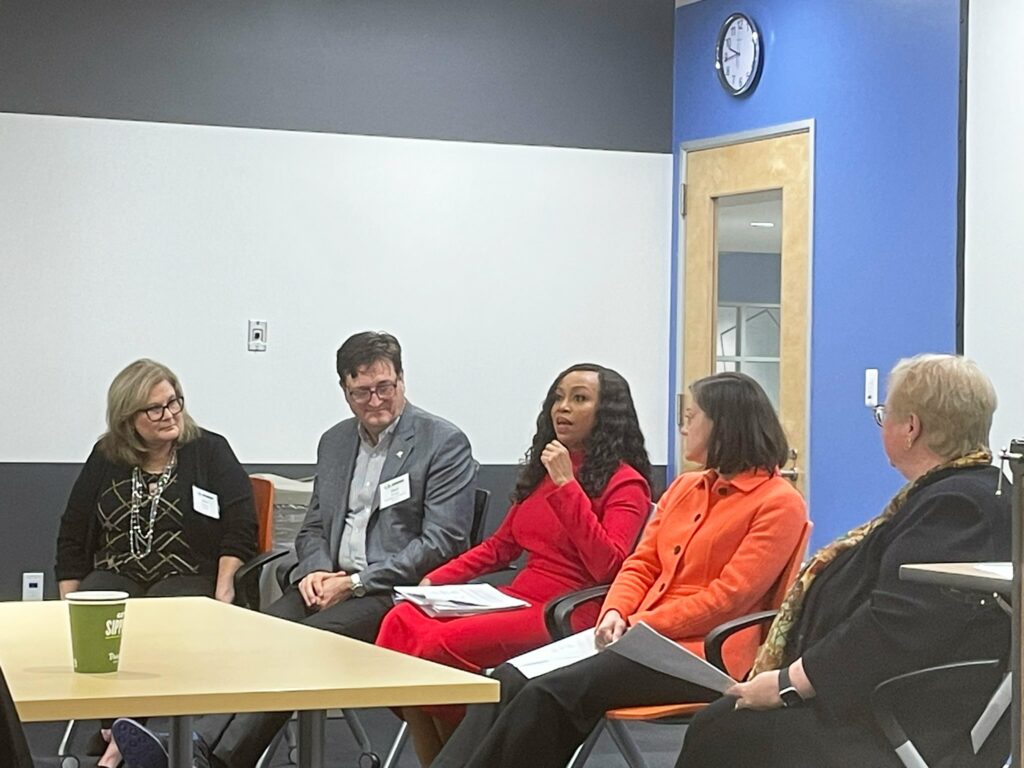
On Oct. 31, SBND hosted a panel focusing on business and sustainability in the Great Lakes region. The event was a collaboration with the Council of the Great Lakes Region and featured Shanelle Jackson, senior manager, LyondellBasell; Edna Lorenz, energy director, Corewell Health; Mark Schrupp, executive director, Detroit/Wayne County Port Authority; and Lillian Woolley, senior chemical engineer, Fishbeck. It was a fascinating discussion, and I encourage you to read the story here. Before the panel discussion, Colin Bird, counsel general of Canada in Detroit, spoke about how Canada and the U.S. work together on issues that include the environment, maritime trade, and stewardship of the Great Lakes. In Michigan, we are more aware of this than most in the U.S., but some of the specifics were new to me. Some examples: In 2022, Canada was the U.S.’s largest trading partner in goods and services. About 80% of Canadian goods exports to the U.S. ‘feed’ American supply chains for final goods. According to U.S. trade data, in 2022, bilateral trade in goods and services was US$914.3 billion, representing over US$2.5 billion worth of goods and services crossing the border every day. The joint stewardship of the environment is a cornerstone of Canada-U.S. relations, from air and water quality to wildlife management. This includes at least 50 federal bilateral arrangements, more than 100 arrangements at the state and provincial level, and the Boundary Waters Treaty of 1909. The Canada-U.S. Joint Action Plan on Critical Minerals Collaboration and the Memorandum of Understanding (MOU) expand energy cooperation between the two countries are some examples of collaborative initiatives. Canada’s 2023 federal budget allocates $650 million over ten years to support monitoring, assessment, and restoration work in key freshwater ecosystems, many of which are shared by Canada and the US. Of this total, $420 million will go towards restoring and protecting the Great Lakes, complementing significant U.S. efforts in this regard. On September 18, the University of Michigan announced an award of $5 million from the National Science Foundation to establish the Global Center for Understanding Climate Change Impacts on Transboundary Waters, comprised of U.S. and Canadian universities and Indigenous representatives. McMaster University will lead the Canadian side, with $3.75 million in funding provided by the National Science Foundation. More trade statistics specific to Michigan can be found here. Be sure to subscribe to our newsletter for regular updates on sustainable business practices in and around Detroit.
30-Year Architecture Firm Looks Toward Sustainability in Design
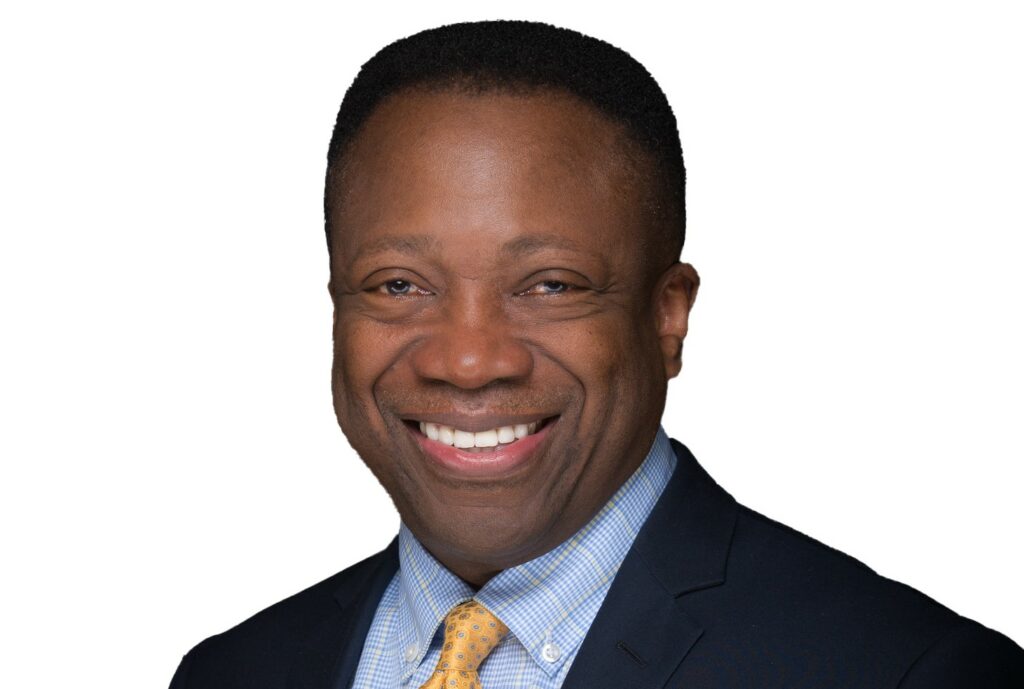
Hamilton Anderson Associates (HAA) sits in the heart of what was once Harmonie Park and is now Paradise Valley – and has since the architecture firm’s start in 1994. Its doctrine is to ‘design sustainable communities that inspire change,’ and this encompasses not only architecture, but interior design, landscape architecture, urban design and planning, and development services. The firm was founded by Rainy Hamilton Jr. and Kent Anderson. SBN Detroit spoke to Hamilton about the firm’s sustainability focus and impact on Southeast Michigan. Q: Tell me about HAA as it relates to sustainability A: This is a big topic. Overall, we are always looking to have a positive impact on our clients’ projects and ultimately their bottom line. We always strive to have their best interests in mind and toward that, we need to be cognizant of the design approach, and how we can spend their funds wisely and thoughtfully. We incorporate products and materials that can be recycled or have been recycled, and that are manufactured locally, whenever possible. We think about how we can craft design solutions that take into account the environment and the planet – such as how we can include passive energy generation like wind and solar power. Also, how we manage stormwater is a significant topic with large impervious areas such as roofs and surface parking areas. All of these things are embedded in our thought process for every project. Q: Has HAA always had a focus on sustainability? A: Yes. As trained architects, it has become more commonplace over the last several decades to have this mindset around sustainability. We have been trained to push for well-crafted design solutions that minimize the impact on the environment. We are conscious of utilizing renewable resources such as lumber. Reforesting serves to replenish these natural resources when done properly. At Hamilton Anderson, sustainability is built into our design processes. It is in our DNA to minimize the impact of building on Earth and be sensitive to the environment. Q: Your website says that HAA designs sustainable communities that inspire positive change. Will you elaborate on this? A: In very simplistic terms, let’s think about a typical day. If we can craft our public rights-of-way to be rich and beautiful with adequate lighting and thoughtful landscaping when people move through these areas their spirits are lifted. You feel a very different reaction if you walk through an area with no investment, no landscaping, and no thought or work put into beautifying the space. These types of conditions can negatively impact one’s psyche. Good design is good business. We want to create places of work, rest, and play toward the best possible experience. Q: What are some examples of this? A: We were excited to be part of the design team for Little Caesars Arena. The urban design solution implemented recessed the seating bowl down below grade to reduce the overall height of the facility on the street. Building elements such as retail outlets and other activities were placed around the bowl and the exterior facades were articulated in varying ways to create a wonderful street environment. The result is an active, energized Woodward Avenue with wonderful streetscapes. As we travel the Woodward Corridor, there are many HAA projects that have been completed and have contributed to the growth of Detroit. Projects include the Wayne State Welcome Center, the Addison Hotel, the Strathmore Hotel, Crystal Lofts, Woodward Place, Hamilton at Midtown, Woodward West, Detroit School of Arts, and City Modern. Our work on the Hudson’s Tower with the Bedrock team involves enhancing the downtown area with this major new landmark building and thinking about how it intersects the ground plane and surrounding streetscapes. We rode by the Port Authority Building the other day that we designed on the Detroit River. We suggested a second floor be added to what was originally going to be a one-story structure. Now, there is a gathering event space on top that takes full advantage of the riverfront views. This banquet and meeting space has had a positive impact on the Port Authority’s bottom line and has enhanced the visitor experience. We are thrilled to be working on the expansion of the Music Hall and how to craft this new building next to the historic Music Hall. This addition will enhance the hall and will shine as a beacon welcoming visitors into this vibrant district. Q: How does developing the economy in Southeast Michigan come into play in your work? A: The projects we help bring to fruition and the overall momentum happening in Detroit play a huge role in sustaining and advancing the economy in Southeast Michigan. When I think about the Henry Ford Health right in Midtown, we are proud to be part of the design team. We are influencing how this large development meets the ground plane and embraces the surrounding community. This is critical for the success of this project. The sheer number of jobs this project will create is good for the city and enhances the future of healthcare in Detroit and Southeastern Michigan. All of this will enhance the livability of our city. Over our thirty years of practice, I’ve seen development and construction blips occur in Detroit. Large projects begin and end and there have been development lulls in between. But now we have momentum. We are seeing sustained growth on many fronts. We are seeing new housing and sustained growth occur that is fueling our economy. Q: How important is choosing suppliers and partners that also have a sustainability focus? A: Very important. We work with many different engineering consultants that follow best practices for sustainable design. Many of our contractors are LEED Certified and employ sustainable practices in constructing projects. Q: What are your biggest challenges? A: We are having difficulty finding professionals to grow our practice. We are currently a firm of 40 professionals and are looking to grow but struggling to find the right team members. Also, quality assurance is critical. We practice internal
Implementing Sustainability Initiatives is Crucial in Today’s Business World
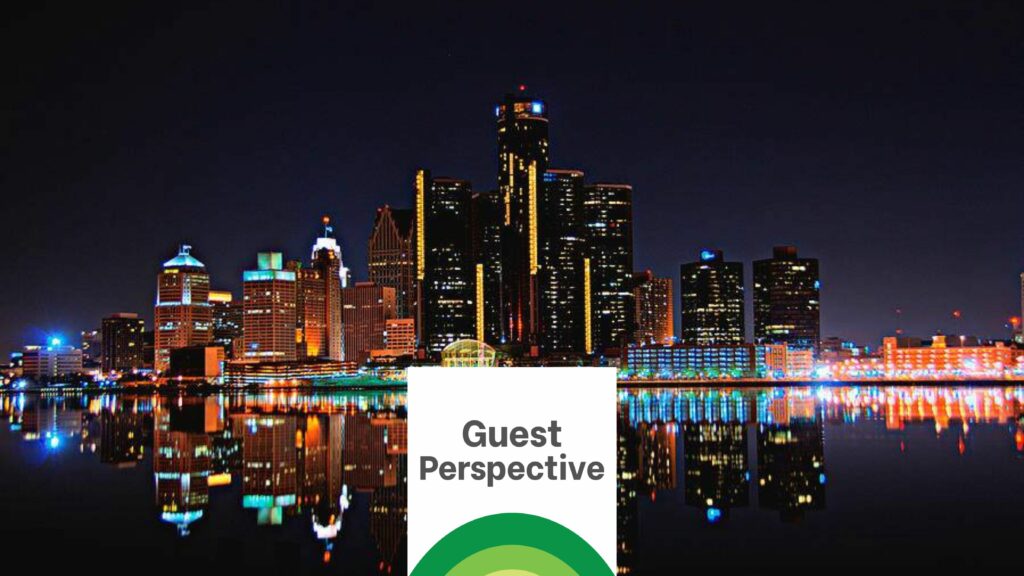
CONNIE LILLEY IS THE EXECUTIVE DIRECTOR OF DETROIT 2030 DISTRICT You may be missing out on growth opportunities if you’re a business that has yet to jump on the sustainability train. I’m sure you’ve heard the word “sustainability” before, but what exactly does that mean to your business? That’s the question all individual companies need to ask. PEOPLE, PLANET, AND PROFIT The well-known triple-bottom-line theory is just one of many theories floating around today. But, the most basic question that all businesses need to ask is: How is my company benefiting People, Planet, and Profit? No matter what program, theory, or process a business intends to follow, there’s one sure thing – getting started can be the hardest part. But, if you are a company that is just getting started, it’s easier than ever to create a sustainability plan for a business. Companies no longer have to reinvent the wheel when writing a sustainability plan. Other businesses have created many programs and published sustainability plans to help lead the way and share best practices. While sustainability means different things to different organizations, there’s no denying that implementing sustainability initiatives can help a company’s growth in more ways than just environmental stewardship. While that is the main focus of sustainability, let’s not forget about the economic benefits as well. A company that reduces utility costs can put that savings into hiring more employees, spurring economic development. Sustainability plans should be a part of any business operational plans. Here are some of the benefits of getting started. SAVE MONEY ● Reduce the cost of transportation to and from landfills ● Reduce your operating expenses when you use less energy and water ● Reduce your stormwater runoff fees Reduce your company’s carbon footprint ● Lowering greenhouse gas emissions by reducing energy and water consumption ● Installing gardens or green roofs to manage stormwater runoff ● Reduce transportation emissions to and from landfills and local traffic Increase your revenue: ● Increase positive public relations and marketing by promoting your company’s sustainability efforts ● Increase sales by offering sustainable products to your customers ● Create a healthy building to attract quality tenants to increase rent ● Provide a healthy environment for employees and thereby reduce sick days The steps described above are not always easy to implement. If you own or manage a building, creating a high-performance building takes focus and commitment. Organizations such as 2030 Districts are forming across North America to assist facility managers and owners with tasks such as tracking and managing water and energy consumption, offering educational opportunities, sharing best practices, and more. Most 2030 District programs are free or cost-effective compared to hiring a consultant or company to assist. For more information and to find a 2030 District in your city, visit www.2030districts.org. Be sure to subscribe to our newsletter for regular updates on sustainable business practices in and around Detroit.
Automotive Leaders Discuss Navigating the Shift to Mobility
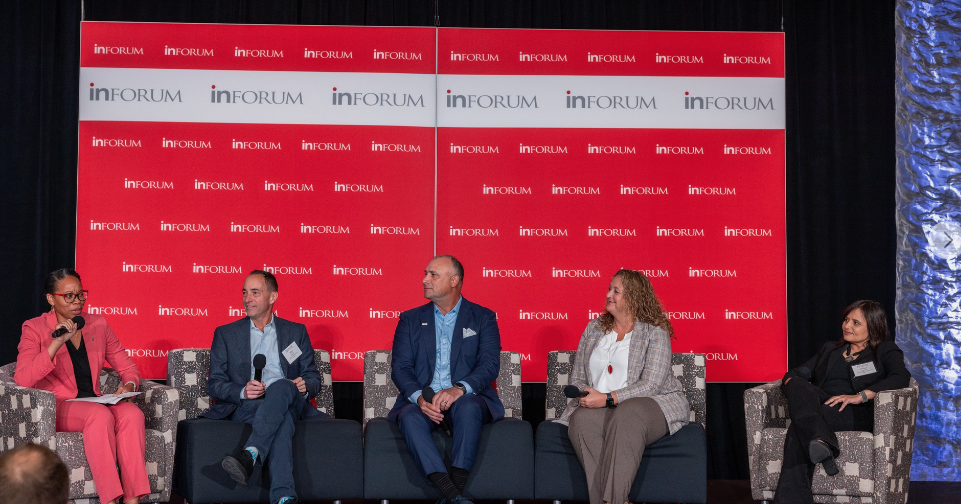
Automotive always has been a technology-driven industry, but in the next ten years, there is likely to be more change in the industry than there has been in the last hundred. And much of that change will be taking place in Michigan. That shift – which moves automotive toward becoming a more sustainable industry – was the topic of a Sept. 15, 2023, breakfast, “Navigating the Shift to Mobility – With Detroit as a Leader,” hosted by Inforum, a nonprofit focused on accelerating women’s careers. The themes included diversity, new opportunities that come with and from young and emerging talent, the power of partnerships, and the future of mobility. Panelists were: Aruna Anand, President and CEO, Automotive Group Sector; head of architecture and networking, Continental North America Kristen Tabar, group vice president, Advanced Mobility Research & Development, Toyota North America Paul Thomas, president, Mobility in Americas, Bosch (effective Jan. 1, 2024), and Alan Wexler, senior vice president, strategy, and innovation, General Motors Justine Johnson, chief mobility officer for the State of Michigan, moderated the discussion. Our takeaways follow: Thomas: When you look for talent, look for talent that looks different from you. Different countries, beliefs, and perspectives, you have to look for talent that has diverse opinions on solutions. The world isn’t as simple as you think it is sometimes. Taber: When students look for a job, remember that it is not a one-and-done deal. You may think this is your passion and you work in this space, but what we see is that people evolve. That cross-pollination and common way to move throughout your career and experience different aspects of this new mobility solution. It’s a completely different landscape that requires different skill sets and backgrounds. Anand: We need to see ourselves in those positions that we are aspiring to be. If you do not have representation, then you don’t know what it’s like and you don’t have the confidence to do something because it is not done. We need to increase the pipeline. Then you understand the reasons why you can’t do this or what else you can do to fix it. Wexler: We see a world with zero crashes, zero emissions, zero congestion. Taber: It is about the products that we put out, how we operate our businesses, and the ripple effect on our supply chains. We need very clear, measurable methods so we are using similar yardsticks. Thomas: We want to invest in communities, we invest in Detroit and the Midwest very heavily to bring mobility people into our companies. We are also always on the diversity journey. You will never know when you are done because diversity is something that you always must work on. Anand: We tend to want to be perfect before we try new things. We find reasons to not be good at things. What is stopping us? We need that coaching, mentoring, role models, all of that together to build that pipeline better. Wexler: (Talent recruitment) really starts with the “why.” … We need skillsets from other industries. We’re becoming more technology-oriented … we pioneer the innovations that move and connect people to what matters, so it’s who wants to be part of that purpose and do something impactful. Taber: We have to understand that none of us is going to be able to move the technology forward by ourselves. It is going to take partnerships that we probably wouldn’t have thought of ever before. Anand: If we can provide an environment that is flexible, then the talents will be able to grow. Thomas: The ecosystem is so large and the opportunities to do different things are available to each one of you in the room. There is so much information out there on how to get involved in mobility. Wexler: There isn’t another industry that has the same opportunity to heal the planet. Experience the full event here. Be sure to subscribe to our newsletter for regular updates on sustainable business practices in and around Detroit.




